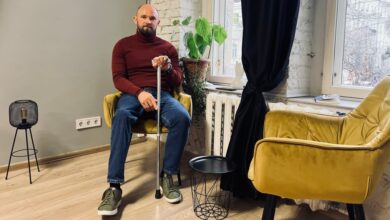Dealing with anxiety? Turn it into something useful

Tossing and turning in the wee hours. A low but constant buzzing in the brain that thwarts concentration. A feeling of tense restlessness.
Most have experienced this sort of anxiety — not clinical anxiety, which might result in a full-on panic attack, but the run-of-the-mill kind that leaves you feeling uncomfortable.
“Anxiety is this simple definition: that feeling of fear or worry that comes in situations of uncertainty,” neuroscientist Dr. Wendy Suzuki recently told CNN Chief Medical Correspondent Dr. Sanjay Gupta on his podcast Chasing Life. “That’s my simplistic definition of everyday anxiety.”
That experience is not pleasant. “The general feeling is, ‘I just want to get rid of it,’” said Suzuki, a professor of neural science and psychology at New York University as well as dean of the school’s College of Arts and Science. She is also the author of “Good Anxiety: Harnessing the Power of the Most Misunderstood Emotion.”
“The misunderstanding is that it is valuable,” Suzuki said. “It’s a warning system that we all need. It is a tool that helps us figure out what we hold dear. If we don’t have that, I think something important will be taken away from our lives.”
You can listen more on how anxiety can be good here.
Suzuki explained how anxiety evolved to protect us. “It’s hard to imagine that in this day and age,” she said. But 2.5 million years ago, “an ancestor with a little baby (was) walking around trying to find food, and there’s a crack of a twig and that could either be … a big animal coming to eat her or it could be the crack of a twig. She better be ready, or we’re not going to have any ancestors after her.”
The crack of the twig left her anxious but alert to danger. “And then her body is (in) the fight-or-flight response,” she said.
“That same response, including all of the fight-or-flight (reaction), gets activated when we look at the news, when we look at social media, at what’s going on today,” she said. “Our heart rates are going up, our respiration rates are going off — that is not good physiologically for us. And so … that is your No. 1 reason to learn how to modulate that stress response.”
The first step toward getting to “good” anxiety, Suzuki said, is learning how to lower your level of everyday anxiety.
So, what can you do to ratchet it down? Here are Suzuki’s top five tips:
Take a deep breath
Practice breath meditation.
“Breath meditation is the oldest form of meditation and can be so effective in really calming ourselves down — and immediately,” Suzuki said. “That’s my No. 1 go-to for people who say, ‘I just need something right now.’”
One calming pattern is box breathing. To do it, inhale deeply for four counts, hold for four counts, exhale for four counts and hold again for four counts. “Repeat to calm your mind and body,” she said.
Get moving
Go for a short walk, Suzuki recommended.
“Did you know that just 10 minutes of walking can significantly reduce anxiety and depression levels in people? You don’t even have to change your clothes to get that,” she said.
“What that’s doing is stimulating the release of neurotransmitters that don’t necessarily decrease your anxiety, but they increase your feelings of reward and happiness,” she said. “Those neurotransmitters that go up include dopamine and serotonin and noradrenaline and endorphins. Every single time you move your body, it’s like giving your brain a wonderful bubble bath of neurochemicals, and it works immediately.”
Reframe your anxiety
Turn anxiety-inducing situations into personal challenges to foster growth and resilience — and enjoy the newness of uncertain circumstances.
Paraphrasing Deepak Chopra, Suzuki recommended embracing uncertainty because it can make life interesting to live.
“In my life, the uncertainty can be something that brings excitement, can bring joy. Not all the time, but maybe you can take part of that and embrace it as something useful,” she said.
For example, she said, “If the same thing happened every single time I went on vacation, that would not be a fun vacation. I like the newness; I like learning new things and being exposed to new things. And I can’t control that by definition.”
Spin straw into gold
Turn your worry into action.
To enhance productivity and reduce worry, transform your anxious what-if list into a productive to-do list, Suzuki advised.
“I like to say that there are gifts that come with your anxiety,” she said, citing what often happens to her right before she goes to sleep.
“I have this worry list that hits me right before I’m going to go to sleep. And so what do I do? I turn that what-if list into a to-do list,” she said.
“I just say, ‘OK, I’m going to remember these things, so Wendy, you can go to sleep now.’ But the next morning I go and take all those things that made me not sleep the night before, and I go do something about them. … In that way, I make myself more productive. And I use my anxiety as the tool that it’s supposed to (be).”
Practice compassion
Support others, Suzuki said, letting them know they are not alone.
“Reach out with a kind word to someone experiencing similar anxiety,” she said, noting that some people feel shame about being anxious over a certain situation. “This simple act can release dopamine and improve your own mood.”




